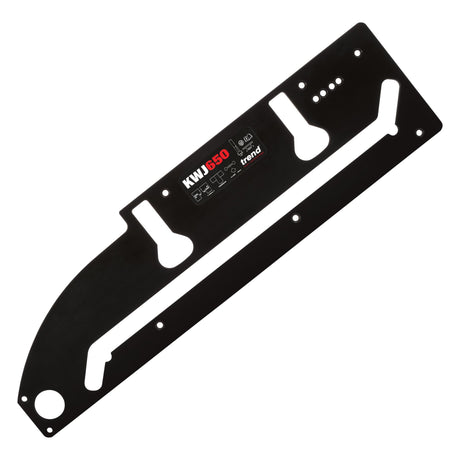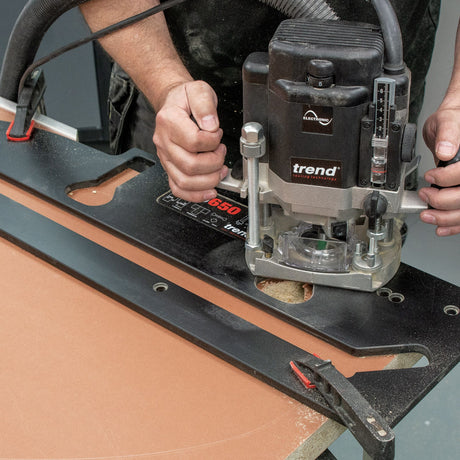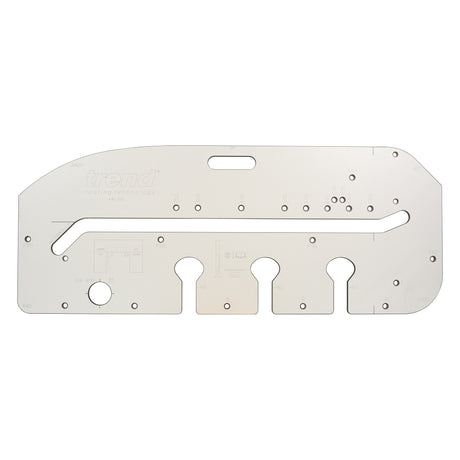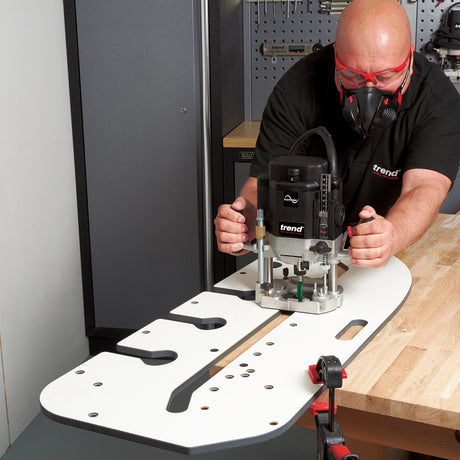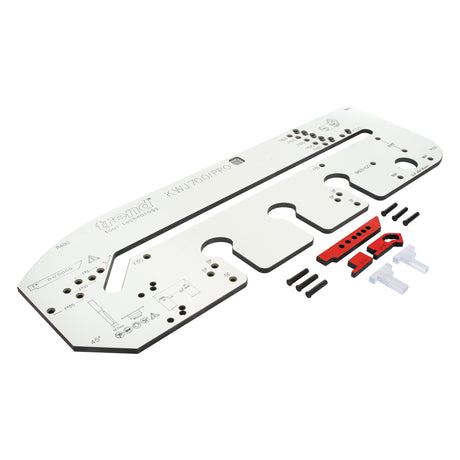UJK
UJK Worktop Radius Jig for Plunge Routers
$187.50$249.90Unit price /UnavailableVery low stock (1 unit)
Worktop Router Jigs for Fast, Accurate Joinery
Worktop router jigs are essential tools for routing precision joints in benchtops, kitchen panels, and laminate surfaces. These jigs help create flawless mitres, butt joints, and connector bolt recesses—ideal for tradespeople and advanced DIYers working on kitchen installations, benchtop manufacturing, or flatpack assembly. Designed to work with a standard plunge router and guide bush, these jigs streamline complex tasks with accuracy and repeatability.
A high-quality router jig allows users to create clean, tight-fitting joins quickly, often in one pass with the right bit. Most worktop jigs include adjustable indexing pins, guide holes for various connector types, and clear markings for aligning different benchtop widths. Combined with a router fitted with the appropriate bushing and cutter, users can tackle mitre joins, scribe cuts, and bolt slots with professional-grade results.
Using a router worktop jig reduces the likelihood of error compared to freehand routing, making it ideal for time-sensitive jobs. These jigs are typically constructed from robust materials like phenolic resin or aluminium with machined accuracy. They’re compatible with a wide range of router brands, especially when used with a universal sub-base and 30mm guide bush system. Accessories like clamp kits and setup templates can further streamline the routing process.
Whether you're fitting laminate benchtops on-site or fabricating panels in your workshop, a purpose-designed router jig saves time, improves accuracy, and reduces waste. They’re a valuable investment for professionals and anyone regularly working with modular or fixed cabinetry components.
FAQs
What is a worktop router jig used for?
A worktop router jig is used to make precise cuts and joints in kitchen benchtops and panels. It allows accurate mitres, butt joints, and bolt recesses for clean, professional joinery in modular or laminate worktops.
Do I need a special router for worktop jigs?
No special router is needed, but a plunge router with a compatible guide bush (usually 30mm) is essential. Ensure your router has the power and depth range to handle the jig’s routing templates and required bit sizes.
Can I use a worktop jig for both mitre and butt joints?
Yes, most quality worktop jigs are designed to handle both mitre and butt joins. They typically feature multiple templates and guide holes for various joinery types, including bolt recesses and scribe cuts.
Are worktop router jigs compatible with all routers?
While most jigs are broadly compatible, you may need a universal sub-base or adaptor to ensure proper guide bush alignment. Always check your router’s base plate size and compatibility with the jig's bushings.
What cutter should I use with a worktop jig?
A 12.7mm (1/2") straight cutter is commonly used for worktop jigs, particularly for bolt slots and connector joints. Ensure it has a long enough cutting edge for full-depth passes and is compatible with your guide bush setup.
Do I need clamps to use a router jig?
Yes, clamps are crucial for holding the jig securely in place while routing. Slippage during operation can result in inaccurate cuts or damaged materials, so always use heavy-duty clamps or bench dogs for stability.
Can I use a worktop router jig for solid timber?
Yes, while worktop jigs are designed primarily for laminate or manufactured boards, they can be used on solid timber if the dimensions and cutter setup align with the jig’s templates. Take extra care with grain direction and tear-out.
How accurate are worktop router jigs?
High-quality jigs are very accurate—typically within fractions of a millimetre. Precision depends on correct setup, alignment, and clamping. Following the jig’s guide lines and using the recommended cutter ensures best results.
Is a router jig better than using a table saw for mitres?
For worktops, yes. A router jig provides better accuracy and safer operation when joining large panels. Unlike a table saw, the jig follows a fixed template, reducing risk of alignment errors or material shifting mid-cut.



